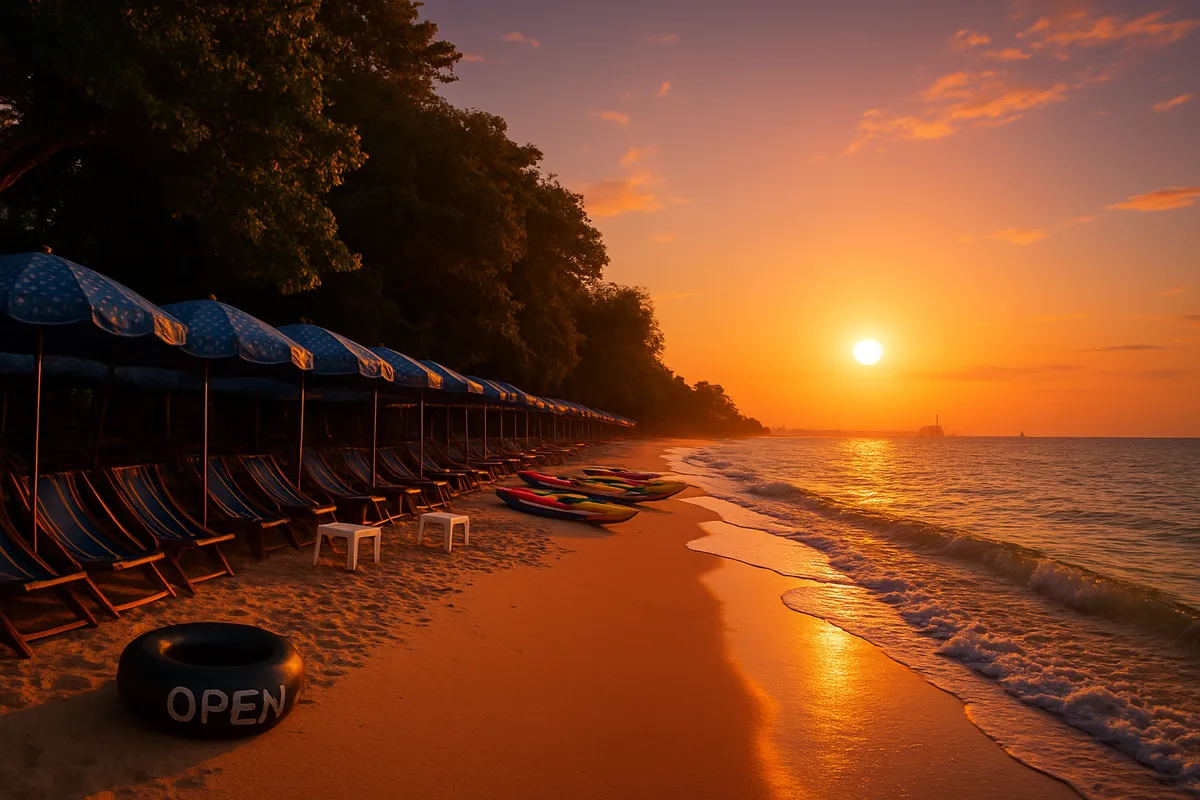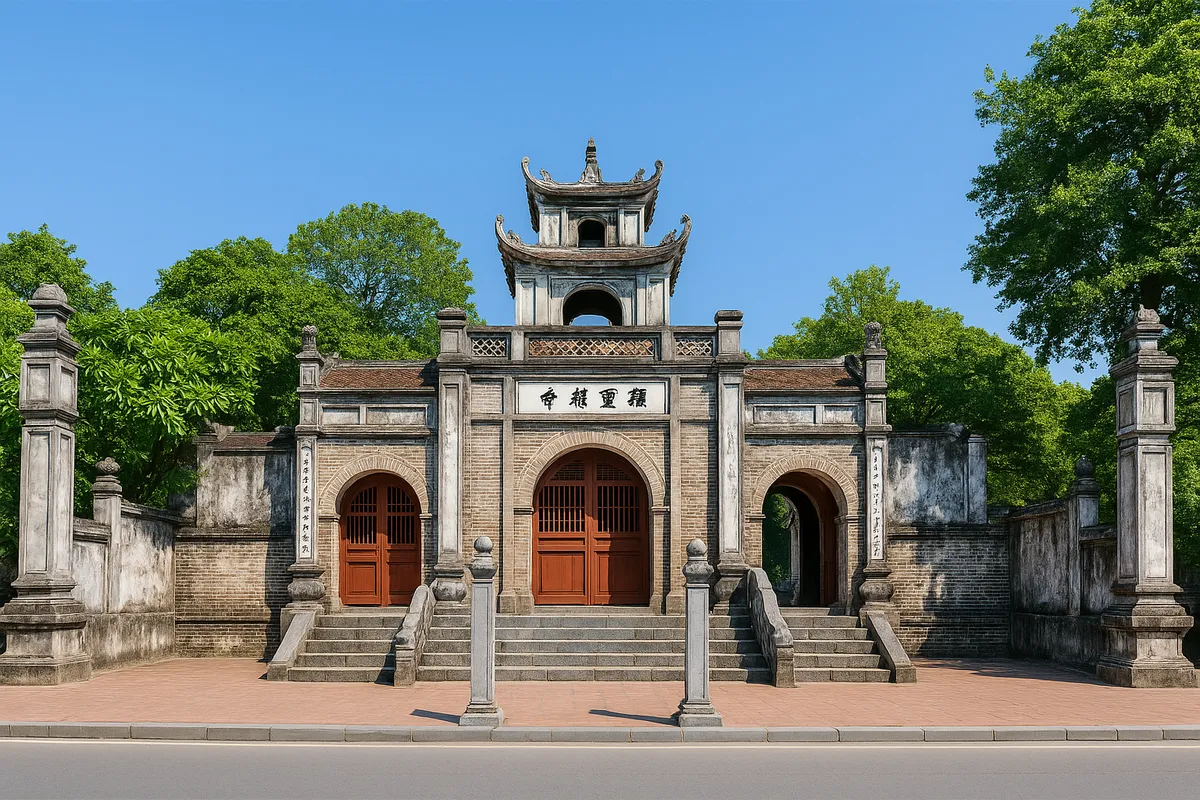What does Do Son beach hide behind the alluvial waves?
- Wednesday, May 14, 2025, 19:21 (GMT+7)
What does Do Son beach hide behind the alluvial waves?
Do Son Beach, where every wave overlaps like layers of old tales, where the breeze carries the scent of history, of pine forests, of the sea, and of sunsets slowly passing over soft sand.
Located just about twenty kilometers from the center of Hai Phong city, Do Son is neither as bustling as Sam Son nor as overwhelming as Ha Long. Instead, it chooses its own identity, peaceful, reflective, ancient yet not outdated, quiet but never dull. Like a whispering storyteller, Do Son makes no grand gestures but has the power to hold on to anyone who passes through.
The road leading to the Do Son tourist area winds like a green silk ribbon embracing the hillside, shaded by rows of straight casuarina trees and filled with the sound of birds calling each other in the rustling pine forest. The scenery here is not just a landscape painting but a symphony blending architecture, culture, and history, weaving together the present and remnants of the past.
Few people know that this land was once a retreat for Nguyen dynasty kings, a resting place for French aristocrats during the colonial era, and later one of the first areas selected as a national resort. On the high hill of Area 2 still stands Bao Dai Villa, an architectural fusion of East and West, where the last emperor of the Nguyen dynasty once watched the sunrise and let his soul drift with the endless sea.
The sea in Do Son does not bear the deep blue of tropical waters but is covered in a calm silvery brown hue rich with alluvial silt. This very tone gives the beach its unique and poetic charm, where forest, mountain, and city converge. In the early mornings, when the sun has not yet lifted the veil of mist, the sea becomes a dim mirror dusted with time, reflecting the resting fishing boats after a long night at sea.
Walking through Do Son is like walking through layers of stories. There is the tale of Dragon Mountain, believed to be the footprint of a descending dragon. There is the story of the buffalo fighting festival, deeply rooted in the coastal folk beliefs. There are tales of ancient wells atop the hills, once revered for their sacred powers to heal. And there are the unnamed stories told through the gaze of a fisherman, the smile of children playing on the beach, or the faint footprints left in the afternoon sand.
Here, the sea is not merely a destination but a companion. People come to Do Son to rediscover the feeling of walking slowly, to listen to the wind slipping through the pine forest, to find calmness amid the rush of the outside world. Photography lovers will not want to miss Area 1 at sunrise, when the mist still hovers and the first golden light stains the water. For those wanting to enjoy a sunset that feels like touching the edge of the world, Area 3 with its high coastal road offers a view that is unforgettable.
Along the coastline, small huts with thatched roofs serve not just delicious dishes but also preserve the essence of local cuisine. There, steamed clams with lime leaves, grilled squid over charcoal, Hai Phong crab noodle soup, and Do Son shrimp noodles are served with rustic charm but bursting with flavor. What lingers most is perhaps the pure fish sauce, made from fresh anchovies right in the Hop Duc fishing village, fragrant, rich, and capturing the essence of the sea in every drop.
Do Son is not only about the sea. It hides surprises within its forests and hills. At the peak of Vung Hill lies a primeval forest, where wild birds sing and the air carries the scent of pine resin and moss-covered rocks. A bit farther stands Hang Pagoda, one of the oldest coastal temples in northern Vietnam, built within a natural cave, where locals believe prayers for peace and wellbeing are answered.
What makes Do Son unique is not its grandeur but its quiet charm. It is the ancient beauty untouched by time, the serenity in each sea breeze, and the deep bond between the coastal community and the sea as if it were part of their very being. It is not rare to witness fishermen casting their nets at dawn, the cheerful chatter as boats return to shore, or the early markets bursting with colors of fish, shrimp, and squid freshly brought from the deep sea.
The ideal time to visit Do Son is from April to October, when the weather is dry, the sun is bright, and the sea is calm. For those interested in festivals, come during the ninth day of the eighth lunar month, when the traditional buffalo fighting festival takes place, attracting tens of thousands of visitors. For a quieter experience, choose early spring or late autumn, when the sea is left with only the sound of waves and the flight of birds across the pale sky.
Reaching Do Son is very easy. From Hanoi, visitors can take a bus or drive in just over two hours via the Hanoi Hai Phong expressway. From the city center of Hai Phong, only thirty minutes by car will bring you to the long sandy shores where the salty breeze greets you and the sky stretches wide. Interestingly, the Do Son tourism area is divided into three main zones: Area 1 for beach activities, Area 2 rich with historical sites and old hotels, and Area 3 ideal for quiet retreats and nature exploration.
Few people know that from Do Son, one can see Hon Dau, a small island in the middle of the sea where Vietnam’s oldest lighthouse still stands, built by the French in the nineteenth century. The wooden boat trip to Hon Dau is a unique experience, opening up a secluded space amid the vast sea, where there are primeval forests, wild rock beaches, and a lighthouse that continues to light the nights in silence.
Do Son does not present itself as a modern tourist paradise. It resembles an old painting, each stroke layered with memory. In this place, one does not need to live in a rush, just to live truthfully, with the wind, the waves, and the stunning silences that take your breath away.

 CHECKIN.VN
CHECKIN.VN








Share on